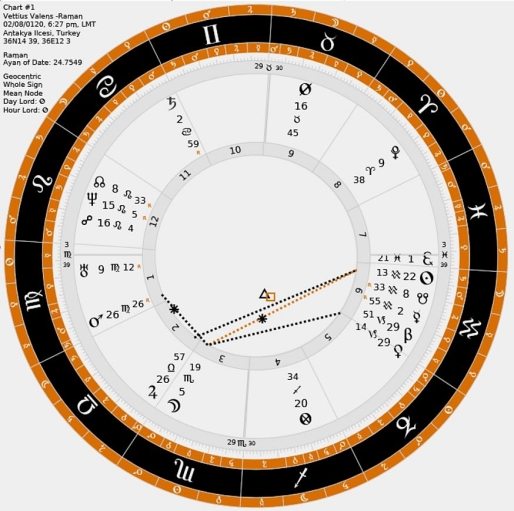vettius valens
Member
Any guide on how to do it?
If someone can facilitate this passage from vettius valens, it would be great as I find it a little hard to understand just like many other old passages
Thanks for your time
[Deleted most of quote that was over 100 words, in violation of forum rules. - Moderator]
If someone can facilitate this passage from vettius valens, it would be great as I find it a little hard to understand just like many other old passages
Having determined accurately the sun’s degree-position at the nativity, note where the dodekatemorion
falls. The sign in trine to the left of this position will be the Ascendant, or the equivalent sign (i.e. either
masculine or feminine), providing you take into account the distinction between night and day births. For
example: let the sun be in Aquarius 22°. The dodekatemorion of this point is in Scorpio; the sign in trine
to the left is Pisces. If the birth was in the day, either Pisces or Taurus or Cancer must be the Ascendant.
If the birth was at night, one of the diametrically opposite signs <must be>. Virgo would be in the
Ascendant in the first hour <of the night>.
Thanks for your time
[Deleted most of quote that was over 100 words, in violation of forum rules. - Moderator]
Last edited by a moderator:



